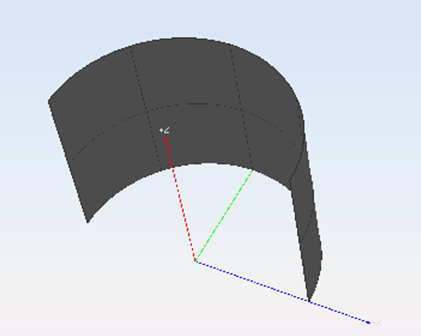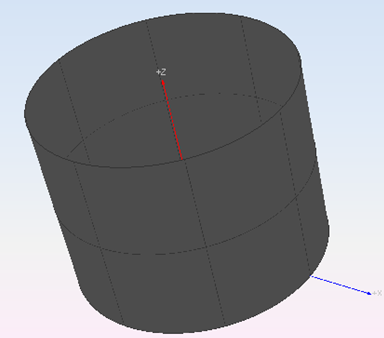symmetric
This command creates an object that is symmetric to the original one with respect to a plane of symmetry.
Inline mode usage
- symmetric -h
- Displays the help file that summarizes the parameters for this command.
- symmetric –all –p <x1 y1 z1> <x2 y2 z2>
- Get symmetric objects (all) moving from start point to end point.
- symmetric –s <name> –p <x1 y1 z1> <x2 y2 z2>
- Get symmetric object (<name> object) moving from start point to end point.
- symmetric –c -all –p <x1 y1 z1> <x2 y2 z2>
- Get symmetric objects (all) copying from start point to end point.
- symmetric –c -s <name> –p <x1 y1 z1> <x2 y2 z2>
- Get symmetric object (<name object) copying from start point to end point.
Interactive mode usage
- Invocation
- symmetric,symmetric -c,symmetric -allorsymmetric -c -all.
- Remark
- When using the-cparameter, the original object is kept in the geometry. Otherwise, the original object will be deleted.
- Parameters
-
- Original objects (when not using theallparameter) can be selected by clicking on them in the geometry view (hold Ctrl for multiple selection) or in the tree view.
- First point of normal vector for the plane of symmetry.
- Second point of normal vector for the plane of symmetry.
Example
We are going to create a cylinder-like surface by using the example surface created for thesurfacecommand as a base. First, let’s create the surface:
>surfacePoints in u direction [3] 2Points in v direction [3] 3Point [0][0] [x y z w] 0 2 3 1Point [0][1] [x y z w] 2 2 3 0.7Point [0][2] [x y z w] 2 0 3 1Point [1][0] [x y z w] 0 2 0 1Point [1][1] [x y z w] 2 2 0 0.7Point [1][2] [x y z w] 2 0 0 1> This surface is only the fourth part of our desired cylindrical surface. Now we are going to create a symmetric surface using the YZ plane as a plane of symmetry. We want to keep the original surface, so we must use the -c parameter:
>symmetric -cSelect objects on screen (Press enter when done) // Select the surfaceFirst point (for normal vector of symmetry plane) [x y z] 0 0 0Second point (for normal vector of symmetry plane) [x y z] 1 0 0> 
Figure 1. Half cylindrical shape
The only thing left to do to obtain the desired shape is to create the symmetric shape using the existing surfaces, with the XZ plane defined as a plane of symmetry. For convenience, we will use theallparameter this time.
>symmetric -c allFirst point (for normal vector of symmetry plane) [x y z] 0 0 0Second point (for normal vector of symmetry plane) [x y z] 0 1 0>
Figure 2. Cylindrical shape